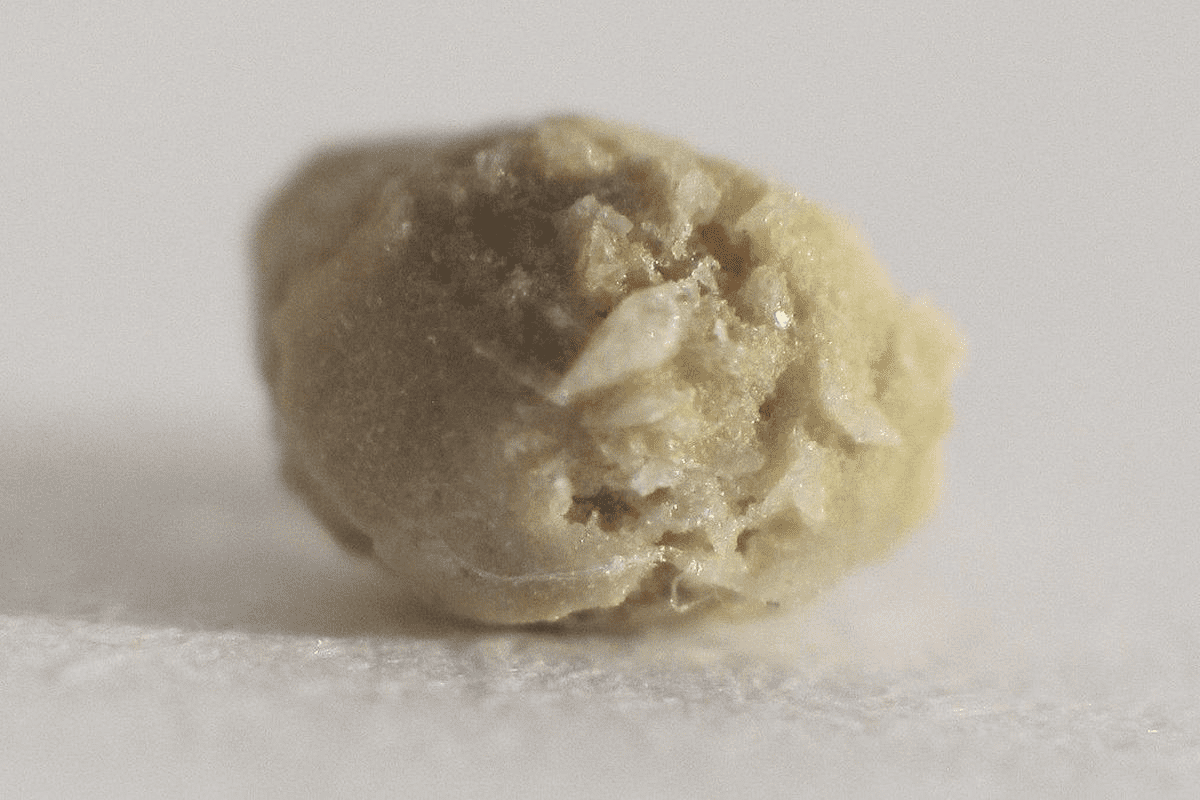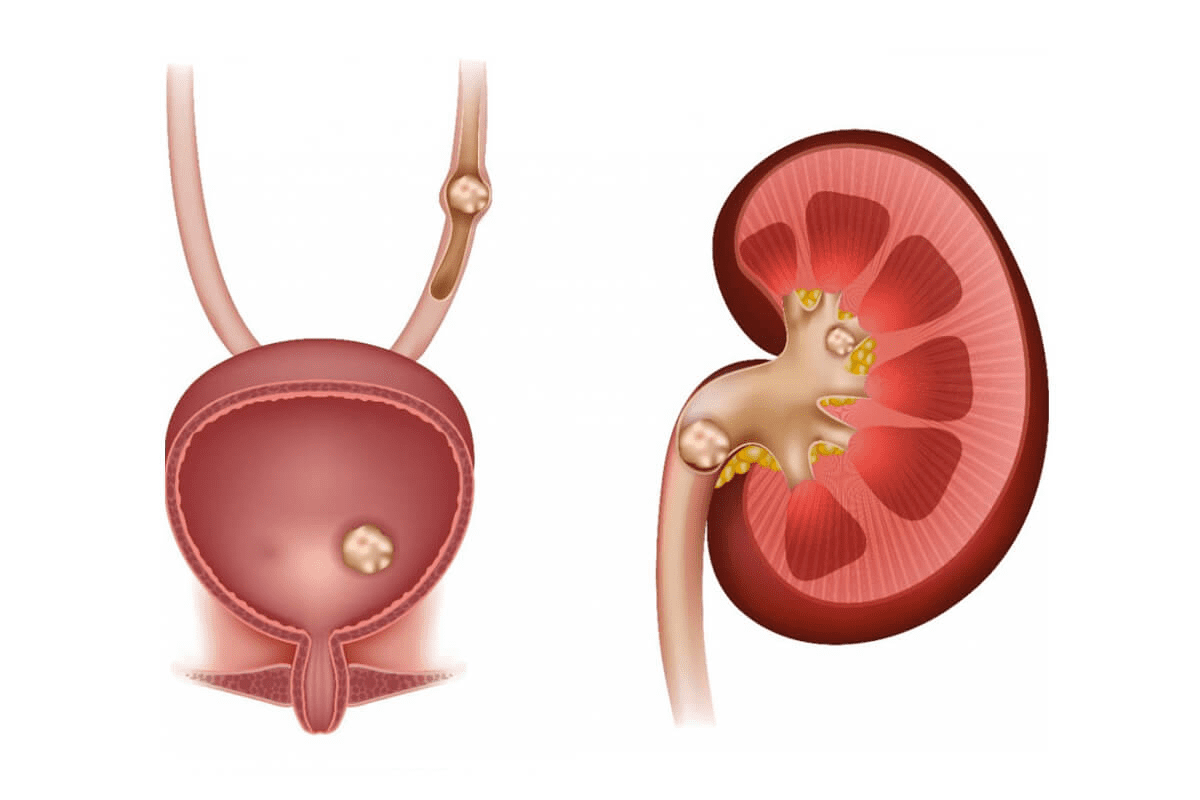Last Updated on October 31, 2025 by Bilal Hasdemir

Ureteral stones are small, hard mineral deposits in the ureters. These tubes connect the kidneys to the bladder. They can lead to severe pain, nausea, and vomiting.
What is a stone found in the ureter is called? Learn the correct medical term (ureteral calculus) and the symptoms you should watch for.
Ureteral stones are small, hard deposits in the urinary system. They can cause a lot of pain and discomfort. If not treated, they can lead to serious problems.
The urinary system helps remove waste and excess fluids from our body. The kidneys filter waste and excess fluids from the blood, making urine. This urine then flows through the ureters and into the bladder, where it waits to be eliminated.
Symptoms of ureteral stones can vary. They may include severe pain, nausea, and vomiting. If not treated, these stones can cause infections and damage to the kidneys.
A Stone Found in the Ureter Is Called Ureteral Calculus

When a stone is found in the ureter, it’s called ureteral calculus. This is different from kidney stones, even though they’re related. Knowing the medical terms helps doctors diagnose and treat the condition right.
The term ureteral calculus comes from “ureter,” the tube from the kidney to the bladder, and “calculus,” meaning stone. This term is key in medical talk. It tells us where and what kind of problem it is. Ureteral stones usually start as kidney stones that move down.
Kidney stones and ureteral stones are similar but not the same. Kidney stones form in the kidneys. Ureteral stones are stones that have moved into the ureters. Here’s a quick comparison:
Characteristics | Kidney Stones | Ureteral Stones |
Location | Form in the kidneys | Found in the ureters |
Symptoms | Often asymptomatic until they move | Cause severe pain, often radiating to the groin |
Complications | Can cause obstruction if they move into the ureter | Can cause urinary tract obstruction and infection |
It’s important to know the difference. While kidney stones can turn into ureteral stones, not all do. But if a stone moves to the ureter, it’s now a ureteral stone or calculus.
Ureteral stones come in different types based on what they’re made of. The main types are calcium oxalate, struvite, uric acid, and cystine stones.
Calcium oxalate stones are the most common. They happen when there’s too much oxalate in the urine. Both genetics and the environment play a role in their formation.
Struvite stones are linked to urinary tract infections (UTIs). They’re more common in women and often caused by bacteria.
Uric acid stones are linked to high uric acid levels. They’re common in people with gout or who are overweight.
Cystine stones are rare. They happen in people with cystinuria, a genetic disorder. This disorder makes the kidneys keep too much cystine, leading to stones.
Knowing about these stone types helps doctors treat and prevent them better.

Ureteral stones are hard deposits made of minerals and salts. They form in the urinary system. The process of their formation and how they cause obstruction is complex.
The formation of ureteral stones starts with supersaturation of the urine with salts like calcium oxalate. When the concentration of these salts gets too high, they crystallize and form stones.
These stones can move from the kidney down to the ureter, causing obstruction. This obstruction can lead to severe pain, nausea, and vomiting. If not treated promptly, it can cause damage to the kidney.
Understanding how ureteral stones form and cause obstruction is key for effective treatment. Recognizing the signs and symptoms early helps healthcare providers intervene before complications arise.
Ureteral stones are a big health issue around the world. The number of people with ureteral stones varies by place. Some areas have more cases than others.
About 1 in 8 men and 1 in 15 women will get a ureteral stone at some point. This is a common problem.
Men are more at risk for ureteral stones than women. The chance of getting a stone also goes up with age.
Diet, how much you drink, and family history play big roles in getting ureteral stones. Eating a lot of animal protein and not enough calcium can raise your risk.
Knowing these risk factors helps doctors find better ways to prevent and treat ureteral stones.
Ureteral stones can cause a range of symptoms. The most significant is renal colic. This is a severe, sharp pain that starts in the flank.
The pain can spread to the lower abdomen and groin. It’s a key symptom to watch out for.
Renal colic is the main symptom of ureteral stones. It’s a severe, stabbing pain. This pain can come and go, often with nausea and vomiting.
The pain is so intense that it may cause someone to double over. They might also change positions frequently.
To manage renal colic, pain relief medications are used. In severe cases, hospitalization is needed. It’s important to seek medical attention if symptoms don’t improve or get worse.
Ureteral stones can lead to many secondary symptoms. These symptoms can really affect a person’s life. It’s important to know about them for the right diagnosis and treatment.
To diagnose ureteral stones, doctors use a few key steps. They start with a physical exam. Then, they run lab tests and imaging studies.
These studies include non-contrast CT scans, ultrasounds, and X-rays. They help doctors find the stones and plan the best treatment.
The treatment for ureteral stones varies based on several factors. These include the stone’s size and location, and the patient’s health. Options range from waiting and watching to more invasive surgeries.
For small stones, doctors might suggest waiting and watching. This means keeping an eye on how the stone moves and the patient’s symptoms.
Medical therapy is another option. It uses drugs to help the stone move. Alpha-blockers, like tamsulosin, relax the ureter’s muscles. This makes it easier for the stone to pass.
When stones are big or cause a lot of pain, surgery is needed. There are a few surgical choices. These include ureteroscopy, PCNL, and ESWL.
Managing pain is key for those with ureteral stones. We use a mix of medicines and other treatments to ease pain.
For mild to moderate pain, we suggest over-the-counter drugs like acetaminophen or ibuprofen. Sometimes, stronger prescription drugs are needed. Always follow the dosage and talk to a doctor before starting any medication.
Medicines aren’t the only answer. Other ways to handle pain include:
These methods can help patients manage their pain better and live more comfortably.
Staying hydrated is key to preventing kidney stones. Drinking enough water helps to dilute the urine. This reduces the concentration of minerals that can form stones.
Eating a balanced diet is also important. Include fruits, vegetables, and whole grains. Avoid foods high in oxalate, like spinach and beets, to lower the risk of stones.
Keeping a healthy weight and avoiding certain medications can also help. These steps can prevent recurrent kidney stones.
Ureteral stones are a serious health issue that needs quick action and proper care. Knowing the causes, symptoms, and treatment options is key for good care. By understanding the risks and taking steps to prevent them, people can lower their chance of getting ureteral stones.
If symptoms don’t go away or get worse, it’s important to see a doctor. This can help avoid serious damage. A healthy lifestyle, regular check-ups, and timely medical care can help manage ureteral stones. With the right care, people can get better and avoid future problems.
Ureteral stones, also known as kidney stones, are small, hard mineral deposits. They form inside the kidneys when there’s an imbalance of water, salts, and other substances in the urine.
Symptoms include severe pain in the side or back, below the ribs. Pain can also radiate to the lower abdomen or groin. You might feel nausea and vomiting, and urination can be frequent or painful.
Doctors use a physical exam, lab tests, and imaging studies like X-rays, CT scans, or ultrasounds to diagnose ureteral stones.
Treatment options include watchful waiting, pain management, and medical expulsion therapy. Sometimes, surgery is needed.
To prevent ureteral stones, stay hydrated and eat a healthy diet. Drinking plenty of water helps flush out minerals and reduces the risk of stone formation.
Untreated ureteral stones can cause kidney damage, infection, and blockage of the urinary tract.
Some cases can be managed at home with pain medication and hydration. But, severe cases need medical attention. Seek help if symptoms worsen or if you have trouble urinating.
Pain management includes over-the-counter pain medications like ibuprofen or acetaminophen. In severe cases, prescription pain medications may be needed.
Kidney Stones: Symptoms, Diagnosis & Treatment – https://www.urologyhealth.org/urology-a-z/k/kidney-stones
Subscribe to our e-newsletter to stay informed about the latest innovations in the world of health and exclusive offers!
WhatsApp us